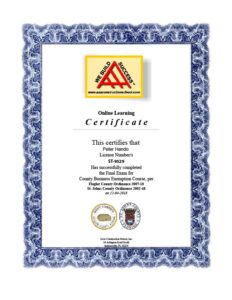Hanging unpasted wallpaper can transform a room, adding personality and style to your space. However, if you’ve never tackled this project before, it can be intimidating. Don’t worry; we’re here to help. In this step-by-step guide, we’ll walk you through the entire process, ensuring that your wallpapering project is a resounding success.
–> Wallpaper installation near me in Saint Augustine
Wallpapering for beginners! – Getting Started
Before you dive in, make sure you have the following tools and materials on hand!
Tools for wallpaper installation
- Unpasted wallpaper rolls
- Wallpaper adhesive
- Measuring tape
- Utility knife
- Wallpaper smoothing brush
- Wall primer
- Paint roller and tray
- Sponges
- Drop cloth
- Step ladder
- Level
Wallpapering preparation
Clear the room of furniture and other obstructions. Lay down a drop cloth to protect your floors and place your tools within easy reach.
Preparing Your Walls for Wallpaper
Clean and repair your walls
Inspect the walls for any imperfections such as cracks or holes. Patch and sand them until the surface is smooth. Clean the walls to remove dust and debris.
Apply wall primer
Applying a wall primer helps the wallpaper adhere better and ensures a smooth finish. Use a paint roller to apply a coat of primer evenly across the walls. Allow it to dry completely.
How to apply unpasted wallpaper?
Cutting wallpaper
Measure the height of your wall and add a few extra inches for trimming. Cut your wallpaper into strips, making sure they match the wall’s height.
Apply wallpaper adhesive
Follow the manufacturer’s instructions for mixing and applying wallpaper adhesive. Use a paint roller or brush to evenly coat the back of the wallpaper.
Hang the first strip
Start at a corner and align the top of the wallpaper strip with your ceiling or a level line. Slowly unroll the wallpaper, smoothing it onto the wall as you go. Use a wallpaper smoothing brush to remove air bubbles.
Match and repeat
Match the pattern on each subsequent strip, overlapping the edges slightly. Smooth out any wrinkles or bubbles as you go. Trim excess wallpaper at the top and bottom.
Finishing Touches
Trim excess wallpaper
Use a utility knife and a straightedge to trim any excess wallpaper at the ceiling and baseboards.
Clean up
Clean your tools and brushes with warm, soapy water. Remove the drop cloth and return furniture to the room.
Hanging unpasted wallpaper is a rewarding DIY project that can elevate the look of any room. With the right tools, preparation, and a little patience, you can achieve professional-looking results. Follow our step-by-step guide, and soon you’ll be enjoying your beautifully wallpapered space.
Feel free to give me a call! I’ll do an in-person survey and give you a customized quote! Call now: 1(904)217-9681
-> Wallpapering services in Saint Augustine
Related wallpapering blog articles:
- Can you paint over wallpaper?
- Wallpaper or Paint? I’ll help you decide!
- How to wallpaper a ceiling?
- Fix common wallpaper mistakes like a pro
FAQs – Paste on the wall wallpaper
How long does it take to hang unpasted wallpaper?
The time it takes depends on the size of your room and your experience level. A small room may take a day, while a larger space could take a weekend.
Can I hang unpasted wallpaper by myself, or do I need help?
You can hang unpasted wallpaper by yourself, but it’s often easier with a helper, especially for larger walls.
What if I make a mistake while hanging the wallpaper?
Don’t worry; mistakes happen. Simply peel back the wallpaper gently and reposition it. If there’s a tear or damage, you can patch it with extra wallpaper.
Do I need to remove old wallpaper before hanging new unpasted wallpaper?
It’s generally recommended to remove old wallpaper, as it can affect the adhesion of the new wallpaper. However, if the old wallpaper is in good condition and securely adhered, you can wallpaper over it.
How do I clean and maintain unpasted wallpaper?
You can clean unpasted wallpaper with a soft, damp sponge or cloth. Avoid using abrasive cleaners or excessive moisture, as it can damage the wallpaper.
Can I paint over unpasted wallpaper?
Yes, you can paint over unpasted wallpaper once it’s fully dried and adhered to the wall. Use a primer designed for wallpaper and then your desired paint color.


